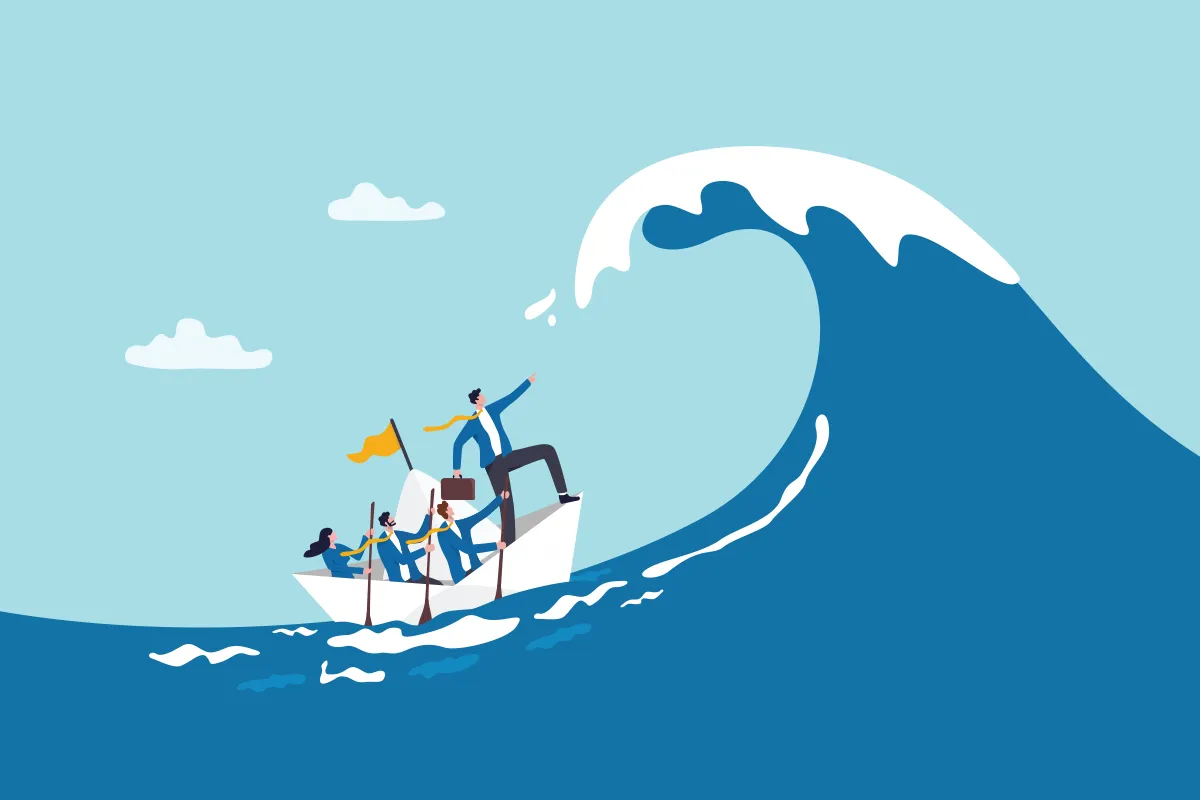If, as the expression goes, a failure to plan equates to a plan to fail, a risk assessment is the first step toward avoiding failure. But more than that, a risk assessment is also a tool for discovering ways to save money and protect assets and people.
While some companies use risk management tools for peace of mind, others use them to prepare for growth and explore new possibilities. Here are some of the most common reasons behind risk assessments.
Get a Comprehensive View of Your Organization’s Risks
A risk assessment outlines events and situations that could hinder the productivity, safety, and financial viability of your organization. It also can eliminate risk “blind spots” by providing clarity around the hazards and risks you need to prepare for.
For example, a manufacturer in a hurricane-prone area may be well aware of the risks associated with flooding and high-speed winds. However, a geospatial risk assessment may reveal that a heavy snowstorm in an area where components are sourced could paralyze production. Because the risk assessment highlights this possibility, the company can start looking for alternate suppliers to consider having on reserve during the winter months.
Assess Potential Physical Hazards That Could Harm Employees
Your people are your most valuable resource, and a risk assessment is the best and most important step in reducing the chances of them getting injured on the job. While the risks you look for will depend on your operational landscape, here are some that many companies prioritize:
- Exposure to chemical substances in or around the workplace
- Potential injury that could result from equipment or vehicles
- Production processes that could result in injury over time, such as lifting and moving heavy components repeatedly daily
- Risks resulting from haste, such as performing some actions too quickly or trying to cut corners to save time
Develop Risk Mitigation Strategies
By assessing your risks, you lay the foundation for strategies you can use to mitigate them and their impact.
For example, suppose a software company uses a cloud-based platform to build its solutions. While it may be relatively unlikely, a risk assessment may reveal that even a few minutes of downtime for the company’s dev platform could disrupt and bring its production or testing processes to a halt.
In response, product managers could decide to establish a backup, on-premise solution. This way, when it’s too risky to rely on an internet connection for a dev process, they can shift their operations to the on-prem system.
Decide How to Design Your Risk Mitigation Budget
Whether you’re retaining risk or transferring it to an insurer, performing a risk assessment is step one. This gives you a portfolio of the risks you have to design financial strategies around. By including all of them in your risk management tool, you can see the impact of paying for each risk in-house, transferring it to a third party, or using a combination of both.
For instance, an accounting firm may perform a risk assessment focusing on its cyber exposure. They may decide it would be less expensive to purchase an onsite server and tie it into a continuous backup system than to add a costly cyber rider to the company’s insurance portfolio.
The organization may also decide it can reduce its monthly premiums by using a backup system to prevent downtime from a ransomware attack but still purchase coverage for other cyber risks.
Compare the Impacts of Risks in Context
A risk assessment enables you to compare risks side-by-side. This makes it easier to decide which kinds of training to provide, which types of insurance coverage is required, and which risks may simply be too harmful to assume.
For instance, you may be considering doing business with two companies, one of which has excellent pricing but operates in a country that could be subject to sanctions by your government. The other company charges more and has a history of introducing significant price increases to maintain profitability.
By performing a risk assessment, you can isolate each option and then juxtapose them during a risk analysis. Because you’ve identified each risk, your team may be able to come up with creative mitigation strategies, as well. For instance, you could use a combination of monthly fee ceilings or not-to-exceed contracts to limit the risk of the “safe” provider pushing you over budget limits.
Educate Your Employees About Risk Management
Your risk assessment also lays the groundwork for an employee education program about how to avoid, reduce, and mitigate risk. By assessing your potential risk events, you can establish a curriculum for your risk training.
This may be especially helpful for preventing cyber attacks, especially for people who may be unfamiliar with what phishing attacks, distributed denial of service (DDOS) assaults or malware look like. By identifying these and other attack vectors in your risk assessment, you know the kind of research to do or what to look for from an external training service.
Using Ventiv’s risk management tools, you can plan to succeed—performing deep assessments that surface your full range of potential issues. In this way, Ventiv’s software helps safeguard profits, protect your people, and maximize your business’s uptime. Chat with an expert to see how Ventiv’s IRM is right for your organization.







